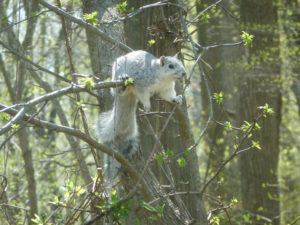On a sweltering July afternoon, cool ocean breezes sound amazing. Soon Maryland residents can count on those offshore winds as a source of clean, renewable power for the Free State.
The Maryland Offshore Wind Energy Act, championed by the National Wildlife Federation and partners like the Maryland Climate Coalition, set into a motion a series of state and federal regulatory processes to enable the construction of turbines 10 miles off the coast of Ocean City. The final step in that process is approval by the Maryland Public Service Commission (PSC). The PSC will begin hearings in late August and is expected to make a final decision on Maryland’s offshore wind proposal by early 2017.
Currently, 40% of the energy Marylanders consume is generated by coal-fired power plants, resulting in habitat destruction from its extraction and dangerous air pollution and climate change impacts from its combustion. Climate change contributes to sea level rise, higher ocean temperatures, and an increase in the frequency and intensity of tropical storms. These impacts have far-reaching consequences.
Transitioning to clean energy sources, such as Atlantic offshore wind, is one of the essential ways to protect wildlife and coastal communities. Guided by strong conservation principles, offshore wind energy can be sited, constructed, and operated in a manner that is protective of our coastal and marine wildlife.
Clean Energy Critical for Chesapeake Bay Wildlife
Maryland is known for its 3,100 miles of shoreline. With its expansive coastline, low-lying topography, and growing coastal population, the Chesapeake Bay region is among the places in the nation most vulnerable to sea level rise.

Sea level rise is placing natural treasures like Blackwater National Wildlife Refuge and the wildlife species that depend on them at risk. Blackwater has been designated as an Internationally Important Bird Area, containing the greatest density of breeding bald eagles north of Florida. In addition, the Delmarva Fox Squirrel, which was recently removed from the endangered species list, has a substantial population in the forested regions of the refuge. The refuge’s marshland provides critical spawning habitat for migratory fish and commercial shellfish. According to the US Fish and Wildlife Service, Blackwater has lost nearly 5,000 acres of wetland to rising seas.
Climate change is accelerating faster than scientists predicted even five years ago and is threatening wildlife habitat along the coast. So it’s even more critical now that we shift away from fossil fuels. We can help protect the future of Chesapeake Bay wildlife by transitioning away from burning coal, oil and gas that fuels climate change.
Helping Marylanders Breathe Easier

Maryland is experiencing its 17th orange air alert day in 2016; the seventh this month. Orange or red air alert days are a result of a dangerous combination of ozone pollution, known as smog, and particle pollution, or soot, and warm temperatures. Ozone pollution from coal-burning power plants and automobiles combines during warm weather to exacerbate respiratory problems for certain groups, making it harder to breathe.
In 2011, Maryland was ranked as 5th worst in the nation for air pollution emitted from coal and oil burning power plants. Dirty energy is one of the main reasons that 84% of Marylanders live in an areas that received a D or an F air quality grade from the American Lung Association in 2015.
Transitioning to clean – pollution-free – offshore wind power would help Marylanders breathe easier. According to a recent report by Synapse Energy Economics, a 200MW offshore wind farm in Maryland would result in $75 million in benefits from avoided mortality due to reduced SO2 and NOx emissions, as well as the climate benefits from reduced carbon pollution.
Get offshore wind updates from the Maryland Climate Coalition
Learn more about offshore wind along the Atlantic Coast.
 Offshore Wind Energy
Offshore Wind Energy 

